UNESCO considers Media and Information Literacy (MIL) as “an important prerequisite for fostering equitable access to information and knowledge and promoting free, independent and pluralistic media and information systems“. MIL is broadly based on the “information and media in our everyday lives“ and this page lists links to such resources in the Santali (ᱥᱟᱱᱛᱟᱲᱤ), and its writing system Ol Chiki (ᱚᱞ ᱪᱤᱠᱤ). Such resources are intended to be used by both Ho users and others alike. Generally, input tools, mobile apps, character encoding converters, Wikipedia and other Wikimedia projects, typefaces/fonts are the common resources included in such a directory.
Last updated: December 2, 2020
Background
The Ho language is native to over 1.4 million people who live mostly in the Indian states of Assam, Bihar, Chhattisgarh, Jharkhand, Odisha, and West Bengal, and Bangladesh. Though Ho has historically been written in Devanagari, Bengali, Odia, and Latin alphabet, Warang Citi is the most accepted script that was created by Lako Bodra, a community leader from Jharkhand. The language has been identified as a vulnerable language by UNESCO. Ho is written in the Warang Citi alphabet.
There is currently an active Wikipedia Incubator project where Ho speakers can create and edit Wikipedia articles. The Ho Wikipedia is yet to go live but with more contributors joining here and contributing encyclopedic content will make this a reality. In general, more content on the Internet is extremely important to share knowledge with the native speakers.
Technical resources
Input tools
Desktop
Ho Transliteration: The Ho-language Wikipedia Incubator project currently uses the Ho Transliteration for input in Warang Citi. The tool is available across all Wikimedia projects and the source code is available here
Mobile / Android
- HoApp: Android app to type Ho in Warang Citi
Typefaces/fonts
Other resources
- Aksharamukha converter (helps convert Warang Citi↔other writing systems)
Open Educational Resources
How-to videos on editing Ho Wikipedia Incubator
Wikipedia is yet to be available in the Ho language and it is currently being created inside the Wikimedia Incubator. One of the editors Mangu Purty has created a series of videos to help users contribute to the project. (videos can be downloaded from here for offline use)
Part 1: Creating an account on Ho Wikipedia Incubator project
Part 2: Settings, Display (downloading and enabling font)
Part 3: Input (typing in Warang Citi) and Editing Ho Wikipedia
How to enable Warang Citi to read content in Ho
The video below by O Foundation is to help Ho speakers display any web content that is typed using Warang Citi in Unicode.
Published text
- Ho Language, online portal by “Birbasa” (Veer Birsa Munda Ho Students Union Odisha) that hosts a range of content on creative literature and cultural heritage, and also technical tools including input tools and mobile apps
- Ho Wikipedia Test Incubator is going to be a full-fledged Wikipedia in the Ho language when released and is currently in incubation — a small group of volunteer editors are developing the project (if you are a native speaker, you can help them here)
- Ho-language textbooks and dictionary (subjects include Mathematics, Biology Science, Kagol, Poetry, Political Science, Sangam Sagam, Science Kaira, Snagam and World History; Text from two publishers — Ho Language Education Council, Odisha and Institute of Ancient Culture and Science Society, Odisha). Bharatvani, Ministry of Human Resources Development, Government of India
Other linguistic resources
Ho-language talking dictionary, video of a teacher teaching the Warang Citi alphabet, and other resources by Swarthmore College Laboratory for Endangered Languages Research and Documentation
We want to share our gratitude with Ho-language scholar and technologist Mangu Purty for the video tutorials and some of the other resources links, and students collective “Birbasa” (Veer Birsa Munda Ho Students Union Odisha) for the video tutorial that we created.
𑢹𑣉𑣉 𑢮𑣋𑣁𑣜 𑢼𑣂𑣞𑣉𑣉𑣜𑣞 𑣌𑣉
𑢹𑣉𑣉 𑣎𑣋𑣁𑣜 𑣔𑣉 𑢮𑣁𑣜𑣌𑣀𑣑, 𑢩𑣑𑣂𑣞𑣁, 𑢹𑣞𑣃𑣜 𑣞𑣄 𑢷𑣊𑣋𑣁𑣚 𑣜𑣈 𑣕𑣆𑣓 10 𑣈𑣈𑣀𑣋𑣈𑣚 𑢹𑣉𑣉 𑣎𑣕𑣂 𑣌𑣉 𑣁𑣄 𑣚𑣈𑣄𑣌𑣎𑣂 𑣕𑣓𑣁. 𑢡𑣅𑣁𑣜 𑣔𑣉 𑢹𑣉𑣉 𑣎𑣋𑣁𑣜 𑢦𑣊𑣚𑣂𑣞, 𑢴𑣈𑣉𑣓𑣁𑣋𑣜𑣂, 𑢩𑣑𑣂𑣅𑣁, 𑢷𑣁𑣊𑣚𑣁 𑣈𑣖𑣁𑣓 𑣌𑣉 𑣕𑣈 𑣉𑣚𑣉𑣄 𑣕𑣆𑣌𑣈𑣓𑣁, 𑣓𑣁𑣄 𑣔𑣉 𑢹𑣗𑣁𑣜𑣊 𑢯𑣂𑣕𑣂 𑣕𑣈 𑣋𑣈 𑣉𑣚𑣉𑣄 𑣕𑣓𑣁. 𑢹𑣗𑣁𑣜𑣊 𑢯𑣂𑣕𑣂 𑣔𑣉 𑢹𑣉𑣉 𑣙𑣃𑣔𑣁 𑣜𑣈𑣓 𑣖𑣂𑣈𑣑 𑣞𑣈𑣀𑣅𑣁𑣓 𑣙𑣉𑣉 𑢺𑣌𑣉 𑢷𑣉𑣔𑣜𑣈 𑣗𑣆 𑣚𑣈𑣑𑣁. 𑢥𑣃𑣓𑣈𑣞𑣌𑣉 𑣔𑣉 𑣓𑣈𑣓 𑣎𑣋𑣁𑣜 𑣉𑣀𑣑𑣉𑣄 𑣏𑣂𑣖𑣂𑣓𑣈𑣊 𑣞𑣂𑣜𑣖𑣈 𑣜𑣈 𑣔𑣉 𑣁𑣑𑣉𑣄𑣁 𑣖𑣈𑣓𑣕𑣈𑣄 𑣖𑣓𑣁𑣕𑣂𑣊 𑣕𑣑𑣁.
𑢳𑣁𑣄 𑢹𑣉𑣉 𑣎𑣋𑣁𑣜 𑢹𑣗𑣁𑣜𑣊 𑢯𑣂𑣕𑣂 𑣕𑣈 𑢿𑣂𑣌𑣂𑣘𑣂𑣂𑣑𑣂𑣅𑣁 𑣗𑣆𑣅𑣉𑣄 𑣕𑣓𑣁, 𑣓𑣁𑣓𑣁 𑣖𑣈𑣓𑣔𑣉 𑣁𑣇𑣜𑣂 𑣗𑣆 𑣞𑣈𑣌𑣁𑣄𑣉𑣁, 𑣘𑣆𑣒𑣂 𑣞𑣈𑣞𑣈𑣓 𑣕𑣓𑣁. 𑢹𑣉𑣉 𑣕𑣈 𑢿𑣂𑣌𑣂𑣘𑣂𑣂𑣑𑣂𑣅𑣁 𑣗𑣆 𑣘𑣆𑣒𑣂 𑣜𑣈 𑣔𑣈𑣊𑣋𑣁 𑣈𑣖 𑣞𑣓𑣁𑣊 𑣕𑣓 𑣌𑣉 𑣓𑣈𑣓 𑣜𑣈 𑣗𑣃 𑣉𑣕𑣁𑣅𑣁. 𑢹𑣉𑣉 𑣎𑣋𑣁𑣜 𑢹𑣗𑣁𑣜𑣊 𑢯𑣂𑣕𑣂 𑣓𑣂𑣕𑣂𑣜𑣈 𑣚𑣋𑣂𑣑 𑣕𑣂𑣞𑣂𑣊𑣄 𑣔𑣂𑣓 𑣜𑣈 𑣔𑣉𑣜𑣌𑣜𑣁 𑣏𑣂 𑣉𑣓𑣚𑣁𑣆𑣓 𑣘𑣚𑣈𑣈𑣒𑣘𑣉𑣉𑣜𑣖 𑣜𑣈 𑣚𑣁𑣄 𑣕𑣈 𑣚𑣁𑣄 𑣗𑣃 𑣓𑣂𑣕𑣂𑣜𑣈𑣅𑣁.
𑢹𑣉𑣉 𑢿𑣂𑣌𑣂𑣘𑣂𑣂𑣑𑣂𑣅𑣁 𑣗𑣆 𑣜𑣈 𑣔𑣈𑣊𑣋𑣁 𑣈𑣖 𑣕𑣓𑣂𑣄 𑢶𑣊𑣋𑣃 𑢸𑣃𑣜𑣕𑣂 𑢿𑣂𑣌𑣂𑣘𑣂𑣂𑣑𑣂𑣅𑣁 𑣜𑣈 𑣏𑣂𑣚𑣂𑣌𑣈 𑣕𑣈 𑣔𑣈𑣊𑣋𑣁 𑣈𑣖 𑣔𑣆𑣅𑣉𑣄 𑣖𑣈𑣓𑣈 𑣕𑣈𑣅𑣄 𑣌𑣎𑣂 𑣖𑣜𑣞𑣁𑣚 𑣚𑣋𑣂𑣑 𑣟𑣂𑣑𑣂𑣅𑣉 𑣌𑣉 𑣌𑣂𑣓 𑣗𑣆 𑣕𑣑𑣁. (𑣈𑣓𑣁 𑣌𑣉 𑣓𑣈𑣓 𑣜𑣈 𑣑𑣇𑣓𑣚𑣉𑣉𑣑 𑣔𑣆𑣅𑣉𑣄𑣁)
1. 𑢹𑣂𑣕𑣑 1: 𑢿𑣂𑣌𑣂𑣖𑣂𑣂𑣑𑣂𑣅𑣁 𑢦𑣓𑣌𑣅𑣃𑣗𑣈𑣈𑣒𑣜 𑣜𑣈 𑣁𑣌𑣁𑣇𑣀𑣒 𑣗𑣆.
https://www.youtube.com/watch?v=Q8TGf1sVdUY&feature=youtu.be
2. 𑢹𑣂𑣕𑣑 2: 𑢾𑣈𑣒𑣂𑣊 𑣌𑣉 𑣉𑣀𑣑𑣉𑣄 𑢱𑣂𑣞𑣘𑣚𑣈𑣈 (𑣘𑣉𑣉𑣀𑣒 𑣑𑣁𑣇𑣓𑣚𑣉𑣉𑣑)
https://www.youtube.com/watch?v=PYWt5LnP8Hw&feature=youtu.be
3. 𑢹𑣂𑣕𑣑 3: 𑢦𑣓𑣘𑣃𑣒 (𑢹𑣗𑣁𑣜𑣊 𑢯𑣂𑣕𑣂 𑣕𑣈 𑣉𑣚) 𑣉𑣀𑣑𑣉𑣄 𑢨𑣑𑣂𑣒𑣂𑣊
https://www.youtube.com/watch?v=jyjaEP3Zl-g&feature=youtu.be
𑢡𑣚𑣈𑣈 𑣉𑣉 𑣖𑣂𑣈𑣑 𑣟𑣂𑣑𑣂𑣅𑣉 𑣚𑣈 𑣗𑣆 𑣚𑣈𑣑 𑣕𑣆𑣌𑣈𑣓𑣁 𑣆𑣀𑣒𑣜𑣓𑣈𑣒 𑣜𑣈 𑢥𑣃𑣓𑣂𑣌𑣉𑣉𑣑 𑣕𑣈 𑣉𑣚𑣁𑣌𑣁𑣓𑣄 𑣌𑣉 𑣏𑣂𑣚𑣂𑣌𑣈 𑣘𑣉𑣉𑣀𑣒 𑣆𑣀𑣞𑣒𑣉𑣉𑣚 𑣌𑣈𑣈 𑣕𑣈 𑣓𑣈𑣚𑣈 𑣕𑣈𑣅𑣄 𑣖𑣈𑣓𑣕𑣈.
https://youtu.be/QRfKy8SfL2M?list=PLIglc3FBUWUxVYNK9QQgRAZ1nQdjpqDlE
𑢼𑣂𑣞𑣉𑣉𑣜𑣞 𑣌𑣉:
-
𑢹𑣉𑣉 𑣎𑣋𑣁𑣜 𑣌𑣂𑣕𑣈 𑣌𑣉 𑣉𑣀𑣑𑣉𑣄 𑢬𑣎𑣂 𑢷𑣃𑣜𑣃 (𑢫𑣐𑣂𑣑, 𑢹𑣉𑣖𑣙𑣅𑣉𑣖 𑢸𑣂𑣒𑣂𑣌𑣁, 𑢬𑣋𑣉𑣚, 𑢸𑣉𑣉𑣔, 𑢾𑣓𑣁𑣋𑣉𑣖 𑢾𑣋𑣉𑣖, 𑢸𑣂𑣒𑣂𑣌𑣁, 𑢴𑣃𑣓𑣂𑣅𑣁 𑢹𑣂𑣕𑣈𑣙𑣞𑣁 𑣈𑣖𑣁 – 𑢹𑣉𑣉 𑢹𑣅𑣁𑣖 𑢸𑣘𑣁𑣔𑣂𑣜 𑢮𑣃𑣖𑣚𑣁𑣅, 𑢨𑣒𑣈 𑢵𑣃𑣜𑣕𑣃𑣊 𑢸𑣂𑣒𑣂𑣌𑣁 𑢡𑣌𑣁𑣛𑣁, 𑢩𑣑𑣂𑣞𑣁 𑣘𑣁 𑣈𑣕𑣈 𑣁𑣜𑣞𑣁𑣚 𑣁𑣌𑣁𑣓 𑣌𑣂𑣕𑣈𑣗 𑣌𑣉). 𑢷𑣁𑣜𑣁𑣕𑣗𑣁𑣓𑣂, 𑢨𑣖𑢨𑣏𑢡𑣜𑢱𑣂, 𑢷𑣁𑣜𑣁𑣕 𑢾𑣜𑣌𑣁𑣜
-
𑢾𑣟𑣁𑣜𑣕𑣖𑣉𑣉𑣜 𑢬𑣉𑣚𑣈𑣈𑣎 𑢺𑣈𑣗𑣉𑣜𑣈𑣈𑣒𑣉𑣜𑣂 𑣘𑣉𑣉𑣜 𑢨𑣀𑣑𑣈𑣈𑣍𑣎𑣜𑣑 𑢺𑣈𑣊𑣋𑣟𑣈𑣈𑣎𑣞 𑢱𑣉𑣌𑣅𑣃𑣖𑣈𑣀𑣒𑣈𑣈𑣞𑣓 𑣜𑣈 𑣖𑣈𑣓𑣄 𑣕𑣓 𑣖𑣂𑣈𑣑 𑣟𑣂𑣑𑣂𑣅𑣉, 𑣈𑣓 𑣜𑣈 𑣖𑣂𑣈𑣑 𑣙𑣉𑣉 𑢹𑣉𑣉 𑣕𑣈 𑣌𑣙𑣁𑣓𑣂𑣄 𑣌𑣎𑣂𑣆 𑣕𑣓𑣁 𑣉𑣀𑣑𑣉𑣄 𑢹𑣗𑣁𑣜𑣊 𑢯𑣂𑣕𑣂𑣄 𑣈𑣕𑣉 𑣌𑣉 𑣕𑣓𑣁.
-
𑢹𑣗𑣁𑣜𑣊 𑢯𑣂𑣕𑣂 𑢥𑣃𑣓𑣂𑣌𑣉𑣉𑣑 𑢯𑣁𑣜𑣒 (𑢹𑣗𑣁𑣜𑣊 𑢯𑣂𑣕𑣂 𑣘𑣉𑣉𑣀𑣒 𑣗𑣆 𑣕𑣓 𑣌𑣉 𑣚𑣋𑣂𑣑)
-
𑢡𑣌𑣞𑣁𑣜𑣁𑣖𑣃𑣌𑣁 𑢬𑣓𑣟𑣁𑣜𑣒𑣜 (𑢹𑣗𑣁𑣜𑣊 𑢯𑣂𑣕𑣂 𑣕𑣈 𑣉𑣚 𑣁𑣌𑣁𑣓𑣁𑣄 𑣈𑣒𑣄 𑣚𑣈𑣌𑣁𑣓 𑣉𑣚 𑣌𑣉 𑣕𑣈 𑣌𑣓𑣟𑣜𑣒 𑣚𑣋𑣂𑣑)
-
𑢸𑣉𑣉𑣀𑣒 𑣌𑣉:
-
𑢹𑣗𑣁𑣜𑣊 𑢯𑣂𑣕𑣂 𑣕𑣈 𑣉𑣚 𑣕𑣈𑣅𑣄 𑣆𑣓𑣘𑣃𑣒 𑣒𑣃𑣃𑣚 𑣜𑣈𑣅𑣄 𑣞𑣉𑣉𑣜𑣞 𑣌𑣉𑣉𑣑 (GitHub source code link) (𑣈𑣓𑣁 𑣔𑣉 𑢿𑣂𑣌𑣂𑣘𑣂𑣂𑣑𑣂𑣅𑣁 𑣉𑣀𑣑𑣉𑣄 𑢿𑣂𑣌𑣂𑣖𑣂𑣂𑣑𑣂𑣅𑣁 𑣘𑣚𑣈𑣈𑣒𑣘𑣉𑣉𑣜𑣖 𑣌𑣉 𑣜𑣈 𑣘𑣆𑣒𑣂 𑣜𑣈 𑣁𑣋𑣃𑣃𑣄 𑣕𑣓𑣁) 𑢷𑣂𑣗𑣚𑣂𑣅𑣉𑣋𑣜𑣁𑣘𑣂 : 1. 𑢶𑣆𑣌𑣈𑣚 𑢨𑣟𑣈𑣜𑣞𑣓. 2. Warang Citi. Range: 118A0-118FF 𑢷𑣂𑣕𑣂𑣅𑣈𑣖 : 𑢹𑣉𑣉 𑣕𑣈 𑢿𑣂𑣌𑣂𑣘𑣂𑣂𑣑𑣂𑣅𑣁 𑣗𑣆 𑣚𑣋𑣂𑣑 𑣟𑣂𑣑𑣂𑣅𑣉 𑣋𑣁𑣆𑣑 𑣗𑣆 𑣌𑣈𑣓 𑣚𑣋𑣂𑣑 𑣉𑣀𑣑𑣉𑣄 𑣈𑣒𑣄 𑣜𑣂𑣞𑣉𑣉𑣜𑣞 𑣌𑣉 𑣜𑣈𑣅𑣄 𑣚𑣂𑣊𑣌 𑣈𑣖 𑣌𑣈𑣓 𑣚𑣋𑣂𑣑 𑢶𑣊𑣋𑣃 𑢸𑣃𑣜𑣕𑣂 𑣕𑣂𑣌𑣂𑣓 𑣈𑣞𑣃 𑣘𑣃𑣜𑣈𑣄 𑣗𑣂𑣕𑣂𑣅𑣈𑣖. 𑢡𑣚𑣈 𑣗𑣆 𑣚𑣈𑣑 𑣟𑣂𑣑𑣂𑣅𑣉 𑣜𑣈 𑣔𑣈𑣊𑣋𑣁 𑣌𑣈𑣓 𑣚𑣋𑣂𑣑 “𑢷𑣂𑣜𑣗𑣞𑣁” (𑢷𑣂𑣅𑣜 𑢷𑣂𑣜𑣞𑣁 𑢶𑣃𑣀𑣑𑣁 𑢹𑣉𑣉 𑢾𑣒𑣃𑣃𑣑𑣈𑣀𑣒𑣞 𑢥𑣃𑣓𑣂𑣅𑣓 𑢩𑣑𑣂𑣞𑣁) 𑣜𑣈𑣓 𑣌𑣉 𑣈𑣞𑣃 𑣘𑣃𑣜𑣈𑣄 𑣗𑣂𑣕𑣂𑣅𑣈𑣖.
𑢷𑣂𑣕𑣂𑣅𑣈𑣖:
𑢹𑣉𑣉 𑣕𑣈 𑢿𑣂𑣌𑣂𑣘𑣂𑣂𑣑𑣂𑣅𑣁 𑣗𑣆 𑣚𑣋𑣂𑣑 𑣟𑣂𑣑𑣂𑣅𑣉 𑣋𑣁𑣆𑣑 𑣗𑣆 𑣌𑣈𑣓 𑣚𑣋𑣂𑣑 𑣉𑣀𑣑𑣉𑣄 𑣈𑣒𑣄 𑣜𑣂𑣞𑣉𑣉𑣜𑣞 𑣌𑣉 𑣜𑣈𑣅𑣄 𑣚𑣂𑣊𑣌 𑣈𑣖 𑣌𑣈𑣓 𑣚𑣋𑣂𑣑 𑢶𑣊𑣋𑣃 𑢸𑣃𑣜𑣕𑣂 𑣕𑣂𑣌𑣂𑣓 𑣈𑣞𑣃 𑣘𑣃𑣜𑣈𑣄 𑣗𑣂𑣕𑣂𑣅𑣈𑣖. 𑢡𑣚𑣈 𑣗𑣆 𑣚𑣈𑣑 𑣟𑣂𑣑𑣂𑣅𑣉 𑣜𑣈 𑣔𑣈𑣊𑣋𑣁 𑣌𑣈𑣓 𑣚𑣋𑣂𑣑 “𑢷𑣂𑣜𑣗𑣞𑣁” (𑢷𑣂𑣅𑣜 𑢷𑣂𑣜𑣞𑣁 𑢶𑣃𑣀𑣑𑣁 𑢹𑣉𑣉 𑢾𑣒𑣃𑣃𑣑𑣈𑣀𑣒𑣞 𑢥𑣃𑣓𑣂𑣅𑣓 𑢩𑣑𑣂𑣞𑣁) 𑣜𑣈𑣓 𑣌𑣉 𑣈𑣞𑣃 𑣘𑣃𑣜𑣈𑣄 𑣗𑣂𑣕𑣂𑣅𑣈𑣖.




